By Dr Bruno Marić (University of Sarajevo Faculty of Forestry)
Join MARGISTAR’s Dr Bruno Marić in exploring the forests and mountainous regions of Bosnia and Herzegovina and the valuable insights into geological formations and biodiversity these landscapes offer. With peaks reaching heights of up to 2,386 meters, Bosnia and Herzegovina’s mountains provide researchers with unique opportunities to study environmental dynamics and ecosystem resilience. From the intricate network of valleys to the country’s diverse forests, read on to find out how Bosnia and Herzegovina’s terrains serve as a natural laboratory for scientific exploration.
Nestled deep within south-eastern Europe, Bosnia and Herzegovina lies at the heart of the western Balkans and displays an intricate network of borders. To the north and southwest, the country shares a 932 km border with Croatia, while its eastern frontier spans 357 km alongside Serbia. To the southeast, it stretches 249 km neighbouring Montenegro. Along its southern expanse, Bosnia and Herzegovina hugs the Adriatic Sea, its coastline extending about 20 km.
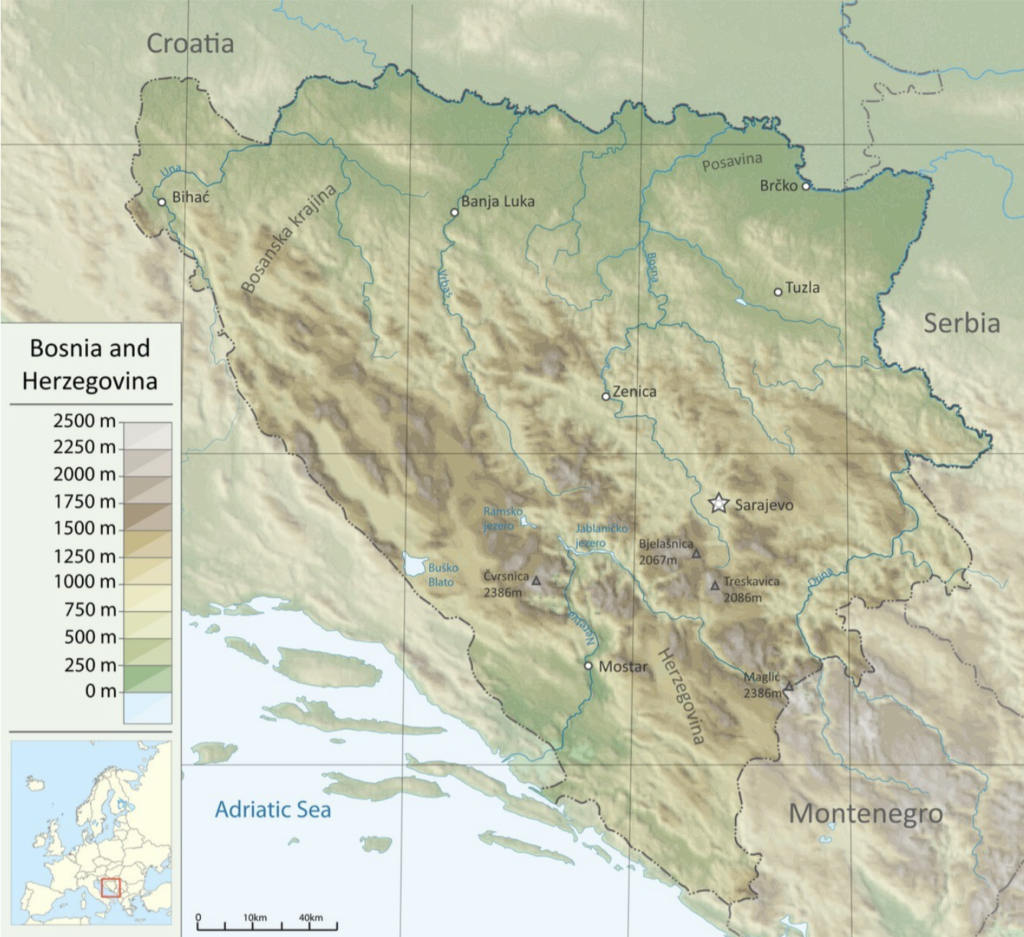
The nation derives its name from its two constituent regions, Bosnia and Herzegovina, though their demarcation remains somewhat unclear. Bosnia predominantly occupies the country’s northern region, encompassing roughly four-fifths of the total landmass, while Herzegovina marks the country’s southern territories.
An Introduction to Bosnia and Herzegovina’s Mountains
The most striking features of Bosnia and Herzegovina’s local terrain are the country’s valleys and mountains, which measure up to 2,386 m in height. Bosnia and Herzegovina is a mostly mountainous country, with mountains making up about 80% of its overall land area and offering a rich source of minerals, forests, clean water, and diverse plant and animal life. The highest peak of Bosnia and Herzegovina is Mount Maglić, followed by the country’s four Olympic mountains: Jahorina, Bjelašnica, Igman, and Trebević.
The Dinaric Belt, a mountain range also known as the Dinarides or Dinaric Alps,
stretches across the whole of Bosnia and Herzegovina, forming a raised and, towards the north, slightly lowered plateau that steeply descends towards the south. This Dinaric Mountain asymmetry is a form of an orographic divide. The Dinaric Mountain morpho structure is high and steep and stretches from the country’s northwest to the southeast, rising between the Adriatic and Pannonian basins.
Bosnia and Herzegovina’s mountains have been the homes of various civilizations throughout history and played an important role in the country’s development. The most impressive remains of the country’s past are ancient tombstones (‘stećak’ in Bosnian) and necropolises from the Middle Ages, which can be found in almost all parts of the country.

During the Middle Ages, mountains served kingdoms and communities as natural barriers and protective zones against invasions. The strategic positioning of fortresses and settlements on mountain slopes contributed to the defence and preservation of local communities and cultures.
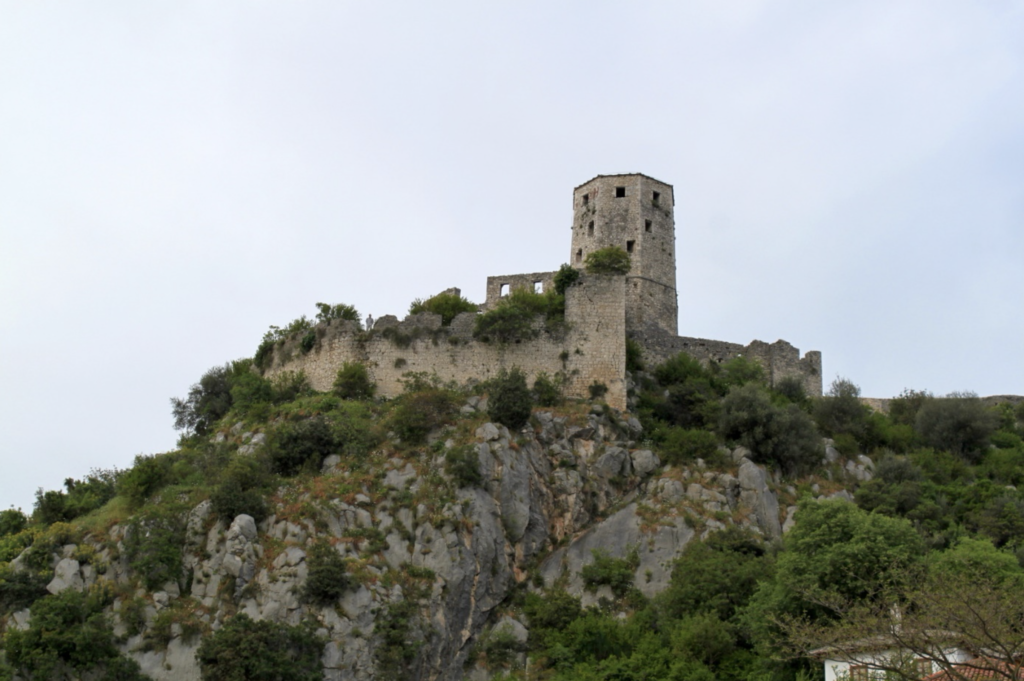
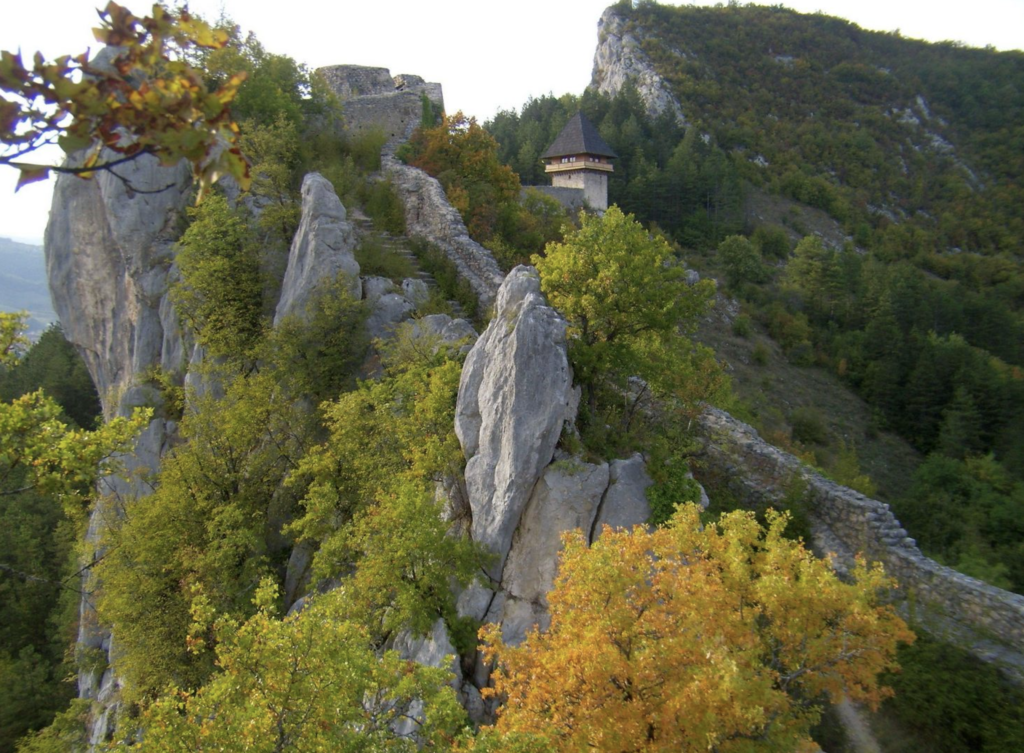
The Wealth of Forests in Bosnia and Herzegovina
In addition to the country’s mountainscapes, forests represent an important resource in Bosnia and Herzegovina. EU-wide data on forest abundance shows that a relatively large part of the country is covered by forest. In fact, depending on the source, forests account for between 50% and 63% of Bosnia and Herzegovina’s total land area. Forest vegetation in Bosnia and Herzegovina is distinguished by its diverse plant communities and rich floral composition, influenced over time by historical vegetation development, ecological factors, and anthropogenic influences.
Forests in the mountain areas of Bosnia and Herzegovina and generally in the Dinarides mountain system maintain a relatively natural state compared to the forests of central and western Europe. Different climatic influences across the region have resulted in horizontal and vertical diversity in forest vegetation. Horizontally, and in lower lands, different climatic zones give rise to various types of oftentimes extrazonal oak forests, like:
- Holm oak in the Herzegovina Mediterranean region;
- Pubescent oak and oriental hornbeam forests at higher altitudes and in the country’s sub-mediterranean area;
- Sessile oak and hornbeam forests in areas of moderate continental climate (such as central, north, and north-west Bosnia);
- Hungarian oak and Turkey oak forests in areas influenced by continental climates, such as the eastern parts of Bosnia and, specifically, Drina Valley.
Vertically, Bosnia and Herzegovina’s forest vegetation is marked by the presence of various belts of climatogenic forests, including beech and fir forests in the central Dinarides and subalpine beech forests at altitudes higher than 1,600 m. Dwarf pine phytocenosis characterise the highest belt of forest vegetation on many Dinarides mountain massifs, reflecting the transitional stages of forest vegetation influenced by topography, microclimate, and human activities. These include secondary deciduous forests of beech, birch, and aspen, coniferous fir and spruce forests, and mixed pine forests, each shaped by environmental conditions and anthropogenic influences.

These forest ecosystems significantly impact the country’s economic development and the living standards of its citizens. The benefits of these forests primarily relate to the country’s employment rates and environmental wellbeing. They are also vital in providing citizens with natural retreats, supplying clean drinking water, and mitigating climate extremes, like flooding.
The People of Rural Bosnia and Herzegovina
Bosnia and Herzegovina is one of the most rural countries in Europe. Around 60% of its population live in rural areas, meaning either villages or scarcely populated municipalities. Only Montenegro, Ireland, and Finland have a higher ratio of rural populations. Demographically, rural communities tend to be older than in urban areas, resulting in a smaller proportion of people working and driving local economies. These communities also face gradual migration to urban areas, with the share of the population living in rural areas falling by about 10% every generation.
Most rural households in Bosnia and Herzegovina generate their income through one of two ways: regular employment (52%) or social benefits (36%). Relatively few depend on agriculture, self-employment, or investment income. Rural populations are typically not entrepreneurial, with most preferring a steady job over starting their own business, and families in employment having higher average incomes than the self-employed. More than half of village households typically have little or no involvement with agriculture, though around a third manage “smallholdings” to produce fruit, vegetables, and livestock products mainly for their own consumption. About 16% of these smallholders may be classified as farmers, as they manage at least three hectares of land and/or three livestock units. However, most smallholders and farmers gain their income from employment or social benefits. Only 6% of rural households depend on agriculture for the majority of their income, and these typically manage holdings of 1-10 hectares of land and/or livestock units.
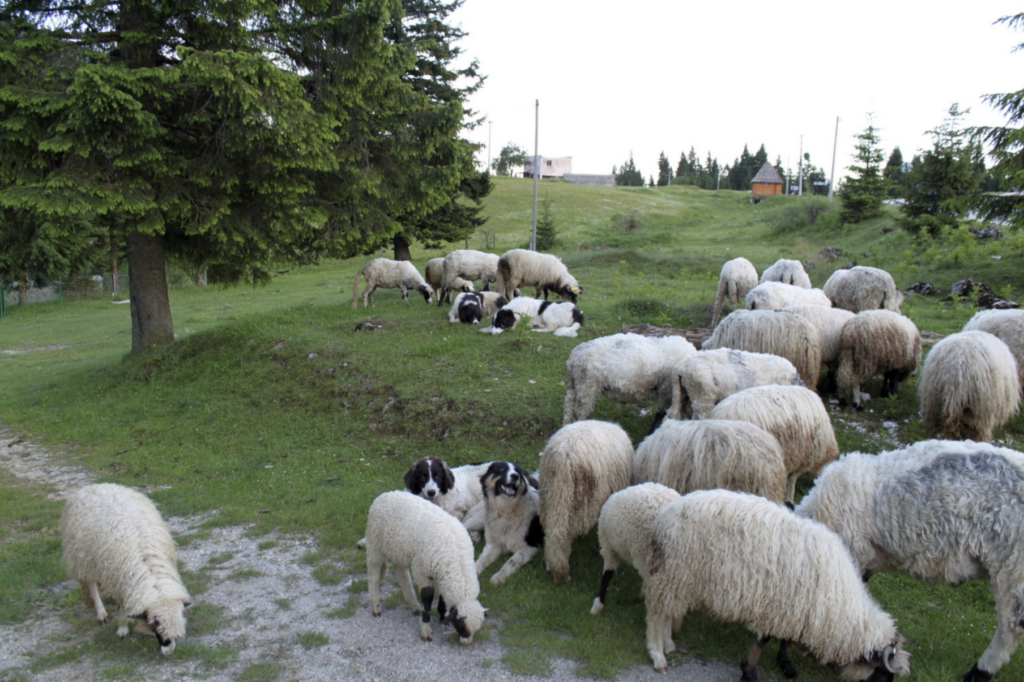
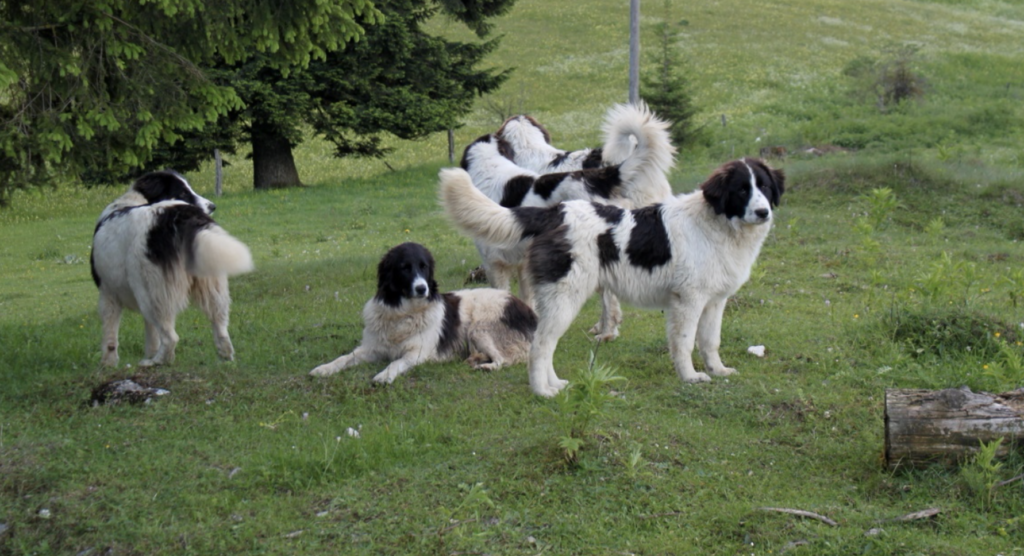
Supporting Rural Areas in Bosnia and Herzegovina
Like many others across Europe, the rural people of Bosnia and Herzegovina rely on three things: jobs, services, and infrastructure, including transportation infrastructure that allows them to access jobs and services in nearby towns and cities. Because rural development approaches that are focused solely on farming fail to significantly meet these needs and often intensify existing social injustices, rural development in Bosnia and Herzegovina must be viewed as an economic challenge rather than an agricultural one.
Nonetheless, agriculture and the food industry are important branches of Bosnia and Herzegovina’s economy both in terms of their monetary contribution and their role in overall employment and socio-economic development. In Bosnia and Herzegovina, the gross added value (GAV) of agriculture, forestry, and fishing has varied over the last period in absolute terms, ranging from 1.6 to 1.8 billion Bosnia-Herzegovina Convertible Marka (BAM).
Forestry is equally vital for the development of these rural areas. Forest production potential consists not only of timber, but also in the collection of other forest products and the employment opportunities that go alongside this. To preserve the forests of Bosnia and Herzegovina, the Food and Agriculture Organisation in 2015 conducted an Analysis of [the] Forestry Sector in Bosnia and Herzegovina which foresees three courses of action: (i) afforestation, or establishing forests on land that has not been forested for a significant period, (ii) fire prevention and restoration after fire, and (iii) improving the resilience and environmental value of forest ecosystems.

Today, the country’s strategic plan for rural development is based on strengthening the competitiveness of the agriculture and forestry sectors and, by extension, rural areas. This is to be achieved by increasing investments and improving knowledge transfer and innovation in Bosnia and Herzegovina’s rural regions. It also involves improving the marketability of agri-food products by improving quality and safety standards and strengthening linkages within value chains to create new income-generating sources, physical infrastructure, social inclusion, and accessible public services.

The header image depicts Mount Maglić, the highest peak of Bosnia and Herzegovina.


